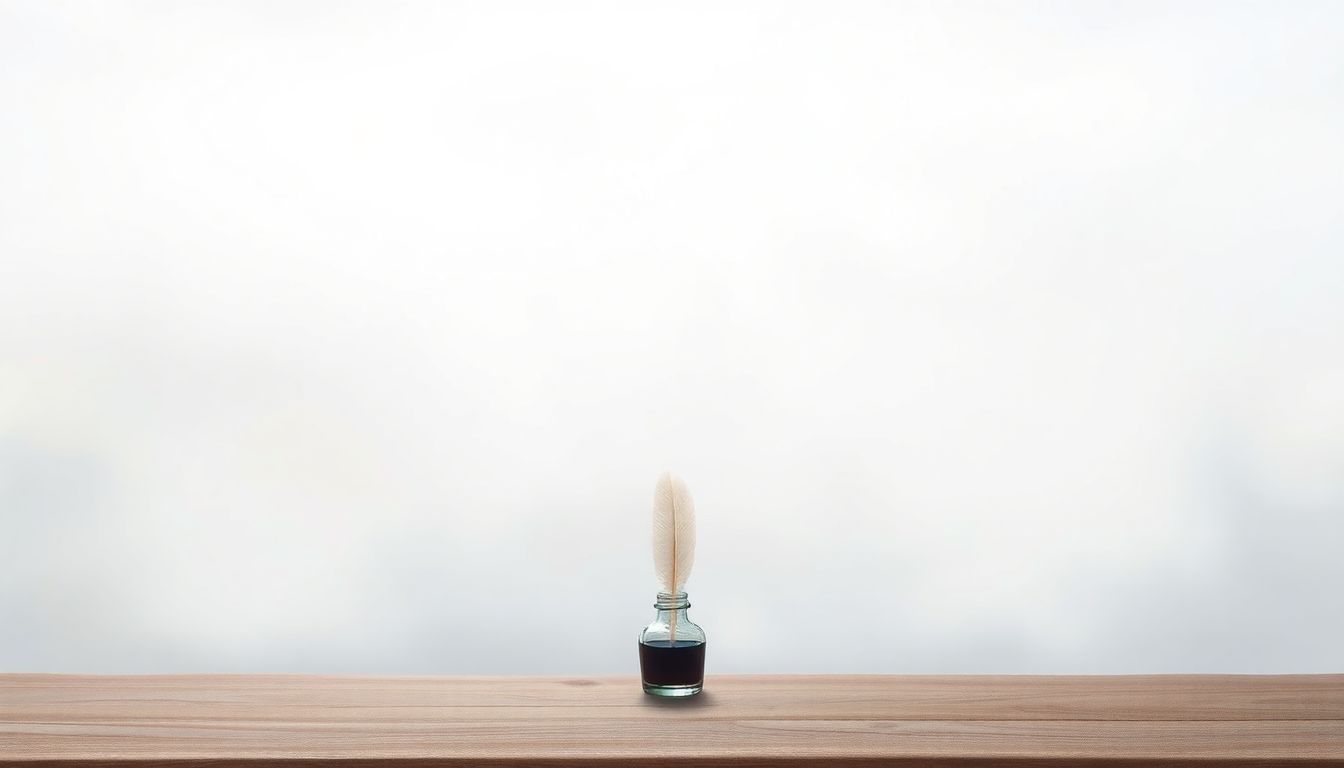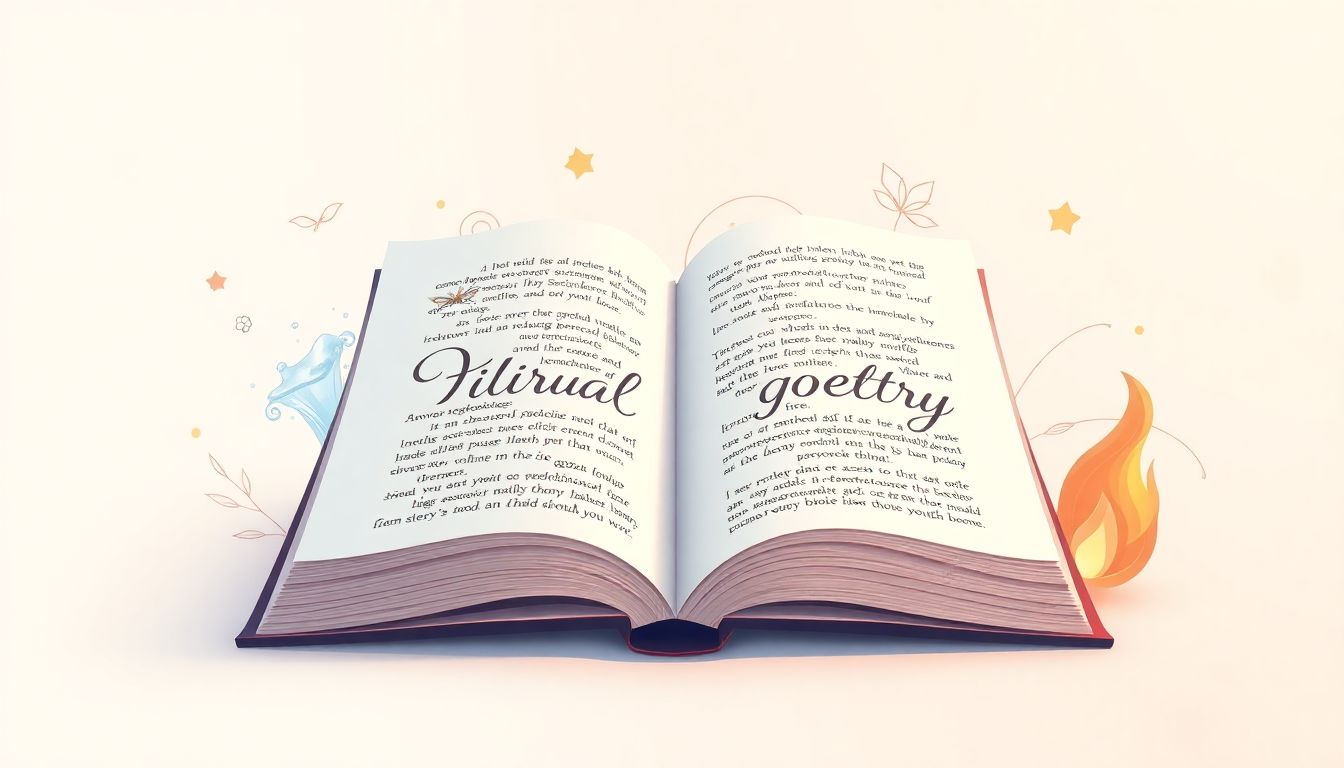If you’ve ever felt stuck trying to combine words and visuals in your poetry, you’re definitely not alone. Many creatives struggle to find the right prompts to spark their imagination, leaving them feeling a bit like a blank canvas. It can be frustrating when you’re eager to create but don’t know where to start.
But don’t worry! If you stick around, I promise you’ll discover a treasure trove of prompts specifically designed to help you explore visual poetry. These ideas will make it easier for you to express your thoughts and emotions with a stunning combination of text and imagery.
Get ready to dive into an array of prompts, techniques, and tips that will transform your poetry projects into captivating visual experiences. Let’s unravel some creative possibilities together!
Key Takeaways
- Visual poetry blends words and images, sparking creativity in new ways.
- Use specific prompts to explore themes like nature, seasons, or emotions visually.
- Combine different art forms, such as photography and digital design, with your poetry.
- Enhance your text with vivid imagery, metaphors, and unique visual techniques.
- Try incorporating interactivity, overlays, or unique layouts for reader engagement.

Useful ChatGPT Prompts for Visual Poetry Projects
If you’re looking to experiment with visual poetry, ChatGPT can be your creative partner. Here are some prompts that can help you explore new poetic landscapes:
- “Generate a poem that intertwines themes of nature and urban life, visualizing a vibrant cityscape with natural elements.”
- “Create a haiku that illustrates a sunset, focusing on colors and feelings. Provide a brief visual description for each line.”
- “Write a short poem about the changing seasons, and suggest four illustrations that capture the essence of each stanza.”
- “Develop a two-stanza poem about dreams, and for each stanza, provide an idea for a visual metaphor.”
- “Describe a magical forest in poetic form, and suggest a corresponding visual format, like a mind map or collage.”
Ideas for Creating Visual Poetry with ChatGPT
If you’re wondering how to generate compelling visual poetry, start with a blend of text and imagery that engages multiple senses. Consider using vivid descriptions that evoke strong imagery. This could involve using metaphors and similes that relate closely to a visual theme.
Think about pairing your poetry with specific colors or patterns that enhance its message. For example, you could create a poem based on the theme of love and visualize it using soft red hues and flowing shapes.
Mix different forms of art, such as photography, painting, or digital design, to match the tone of your poetry. You can also ask ChatGPT to brainstorm combinations of text and types of visuals.
Here are some creative prompts to inspire your visual poetry:
- “Suggest five unique methods for combining photography with poetry to create an interactive experience.”
- “Write a poem based on the theme of water and describe an accompanying visual representation using abstract art.”
- “Generate a list of art styles that would complement a poem about winter and propose a visualization plan for each style.”
Prompts to Generate Imagery for Your Poetry
Creating vivid imagery is key to visual poetry. Here are some prompts you can use with ChatGPT to generate striking visual descriptions for your poetry:
- “Craft a detailed description of a stormy sea, incorporating emotions that could align with the imagery in a related poem.”
- “Write a poem about silk and describe how the texture and movement could be visually represented in a painting.”
- “Generate a list of specific images related to the theme of time passing. Include suggestions for how these could be depicted visually.”
- “Create a vignette about stars, and include imagery prompts that capture the majesty of a starry night.”
Each of these prompts focuses on enhancing the imagery within your poetry, allowing you to capture the essence of your themes in a more impactful way. You can also explore more prompts tailored for different creative writing contexts by checking out this creative writing prompts resource that will spark your inspiration.
Ways to Combine Text and Visuals in Poetry
Successfully merging text and visuals can create a more immersive experience for your audience. Start by considering how each element can complement the other. Use visual elements to follow themes established in your writing, and let your words guide the viewer’s interpretation of the imagery.
One approach is to create overlays where text flows through images, effectively blurring the lines between the two mediums. Think of designing a poster where key phrases are emblazoned across a relevant photo, drawing attention to the poem as both text and artwork.
You can also use blank spaces effectively. Less can be more; leaving space around your text can lead the audience’s eyes to the visuals, creating a rhythm between the words and images. Experiment with the layout during the creative process.
Try these practical prompts to help combine text and visuals:
- “Design a visual layout for a poem that features alternating stanzas and illustrations side by side.”
- “Generate ideas for adding interactive elements to your poetry, such as QR codes linking to visual art.”
- “Create a blueprint for a zine that pairs each piece of poetry with a different artistic style.”
- “Suggest techniques for writing on a digital platform that allows for dynamic integration of multimedia elements in poetry.”

Techniques for Using ChatGPT in Visual Poetry
Using ChatGPT for visual poetry can streamline your creative process while adding depth to your work.
Start by utilizing specific commands that guide the AI toward your desired output. For example, you can request different poetic forms or themes and let ChatGPT generate ideas to match your chosen visuals.
Here are some practical prompts that you can copy and paste directly into ChatGPT:
- “Create a free verse poem inspired by the theme of time, and suggest three visual elements that could accompany it.”
- “Generate a list of techniques for blending digital art with traditional poetry, and include examples for each suggestion.”
- “Write a sonnet about a flower and provide visual ideas for each line, focusing on colors and shapes.”
- “Suggest five ways to use AI-generated imagery to enhance the emotional impact of a love poem.”
This approach not only provides you with a text foundation but also helps in visualizing your poetry as a cohesive whole.
Examples of Visual Poetry Prompts You Can Copy
Finding the right prompt can make all the difference in your visual poetry project.
Here are some ready-to-use prompts that can fuel your creativity:
- “Create a poem about the four elements (earth, water, fire, air) and suggest individual illustrations for each stanza.”
- “Write a narrative poem about an abandoned house and propose a series of images to depict its haunting beauty.”
- “Develop an acrostic poem using the word ‘DREAM’ and describe how each letter could be visually illustrated.”
- “Generate a playful poem about a cat and recommend a color palette that matches the poem’s mood.”
These examples not only inspire but also provide a structured way to incorporate visual elements seamlessly into your poetry.
Tips for Enhancing Your Poetry with Visual Elements
Enhancing your poetry with visuals can amplify its impact. First off, prioritize clarity: make sure your visuals support rather than overshadow your text.
Experiment with typography by using different fonts or styles for key lines. This can draw attention and create a rhythm that complements your poem.
Here are some actionable tips:
- “Use contrasting colors for your text and background to make your poem stand out visually.”
- “Incorporate infographics that summarize your poem’s themes or ideas for quick visual reference.”
- “Consider adding a narrative element to your images, like a progression that mirrors the poem’s story.”
- “Encourage reader interaction by allowing them to submit their visual interpretations of your poem.”
These strategies help ensure each visual element adds value, enhancing the overall experience for your audience.

Resources for Learning More About Visual Poetry
Whether you’re just starting in visual poetry or looking to deepen your understanding, there are plenty of resources available.
Books like “Image Poetry: How to Write with Words and Visuals” provide foundational knowledge on merging text with art.
Online platforms such as Skillshare and Coursera offer courses on visual poetry and creative writing techniques.
You can also explore blogs like The Poetry Blog, which regularly features innovative visual poetry projects and prompts.
Follow social media accounts that focus on visual poetry, such as Instagram pages dedicated to poetry artists, to stay inspired by new trends.
Check out community forums like Reddit’s r/poetry and r/visualpoetry for engaging discussions and shared work that can spark ideas.
For a more interactive approach, consider joining local poetry workshops that emphasize visual elements in writing.
Lastly, utilize ChatGPT itself; ask it to recommend more resources or provide summaries on specific visual poetry techniques.
Here are some prompts to guide your resource search:
- “List five must-read books about visual poetry and their key takeaways.”
- “Recommend online courses focused on the intersection of art and poetry.”
- “Share ten online communities or forums where visual poets connect and share their work.”
- “Identify three influential visual poets and summarize their contributions to the field.”
FAQs
Visual poetry combines text and images to create a unique artistic expression. It is created by incorporating visual elements such as typography, layout, and illustrations alongside poetic text, often enhancing the emotional impact.
ChatGPT can generate creative prompts that inspire imagery and text combinations for visual poetry. By providing themes or keywords, you can receive tailored suggestions to stimulate your artistic process.
Effective techniques include thoughtful placement of text within images, varying font styles, and using color contrasts. Integrating visual metaphors alongside your words can also create a harmonious blend that captivates audiences.
Resources include online courses, poetry blogs, and books focused on visual poetry. Websites like Poets.org and platforms like Skillshare offer valuable insights and tutorials to enhance your understanding and skills.
